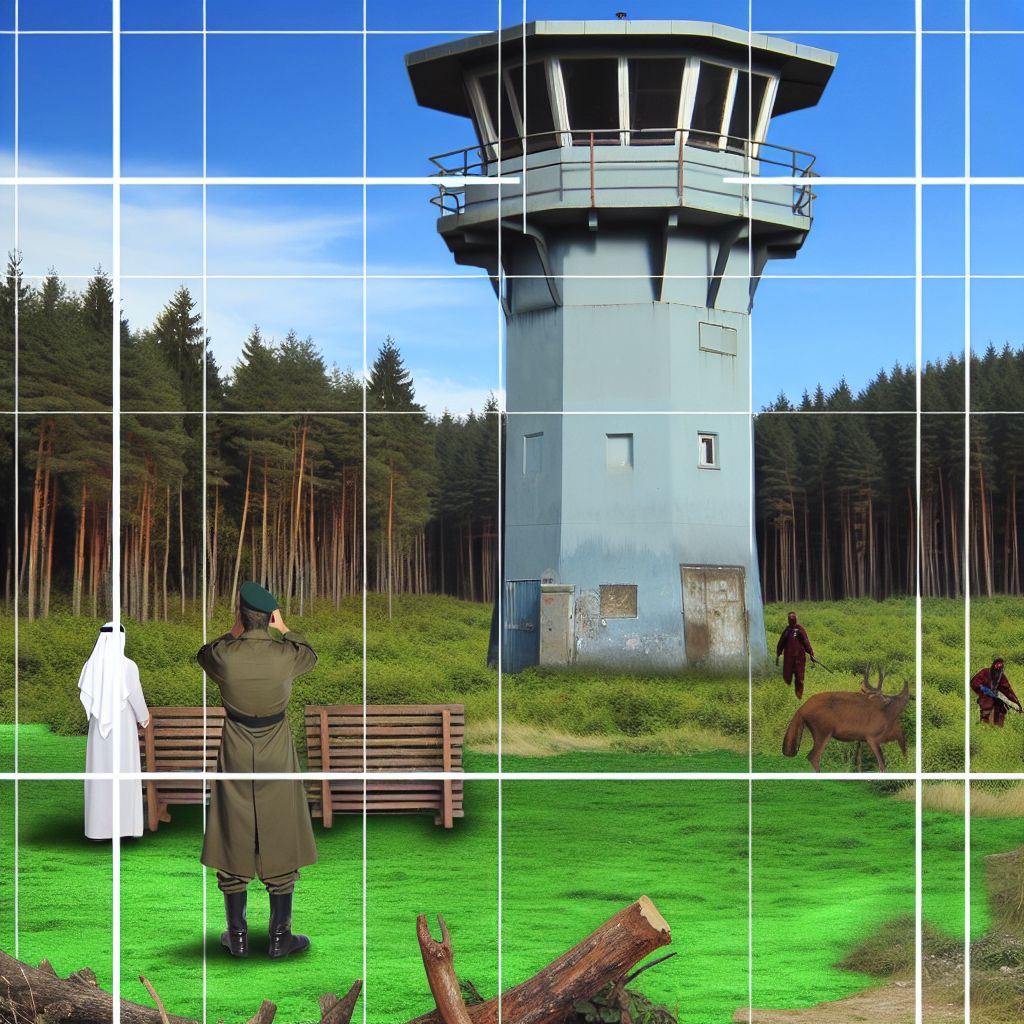Deutsch: Wachturm / Español: Torre de vigilancia / Português: Torre de vigia / Français: Tour de guet / Italiano: Torre di guardia
In the travel context, a watchtower refers to a structure built to provide a high, panoramic view of the surrounding area, historically used for surveillance and defense purposes. Today, watchtowers attract travelers interested in history, architecture, and natural landscapes. They are often found in historic fortifications, on borders, in national parks, and at scenic viewpoints, offering visitors unique perspectives of cities, countrysides, or natural features. Exploring watchtowers can provide insight into the history and strategic importance of a location, as well as offer breathtaking views that are a highlight for photographers, history enthusiasts, and nature lovers alike.
Description

Watchtowers vary in design, age, and purpose, ranging from ancient stone structures in medieval cities to modern observation towers in natural parks. They serve as vantage points for tourists to view expansive landscapes, architectural marvels, and significant historical sites. In addition to their historical and cultural significance, many watchtowers are situated in strategic locations that maximize the visual impact of the natural or urban scenery.
Application Areas
- Historical Tours: Visiting watchtowers that are part of castles, fortresses, or historical defense systems.
- Nature Observation: Utilizing watchtowers in national parks and wildlife reserves to observe animals, birds, and the overall ecosystem from an elevated position.
- Photography and Sightseeing: Capturing panoramic photographs of landscapes, cityscapes, and landmarks from the unique vantage point provided by watchtowers.
- Cultural and Architectural Study: Studying the architectural design and cultural significance of watchtowers in various regions.
Well-Known Examples
- The Great Wall of China: Features numerous watchtowers that were used historically for defense and now serve as a major tourist attraction.
- Fire Watchtowers: Found in many national forests and parks, these towers were used for spotting wildfires and now often serve as points of interest for visitors.
- Leaning Tower of Pisa: Originally designed as a campanile or bell tower, it offers views of the city and is an example of a tower that attracts visitors partly due to its unique architectural lean.
Treatment and Risks
Visiting watchtowers usually involves climbing stairs or, in some cases, steep ladders, which may not be accessible to everyone. Tourists should be prepared for the physical effort required and check accessibility options where necessary. Safety precautions are important to prevent accidents, especially in historic towers with open or high platforms.
Similar Terms
- Observation Tower: A structure designed to offer views of the surrounding area, often found in tourist destinations, parks, and nature reserves.
- Lighthouse: While primarily serving as navigational aids, many lighthouses offer public access for views similar to those of traditional watchtowers.
Summary
Watchtowers in the travel context are structures that offer visitors elevated views of surrounding landscapes, cities, and historical sites. They hold historical, cultural, and architectural significance, making them fascinating destinations for a wide range of travelers. Whether as part of ancient fortifications or modern scenic overlooks, watchtowers provide unique perspectives and enrich the travel experience by blending history, nature, and panoramic beauty.
--
Related Articles to the term 'Watchtower' | |
| 'Rampart' | ■■■■■■■■■■ |
| Rampart: A rampart in the travel context refers to a defensive wall or embankment built around castles, . . . Read More | |
| 'Cologne Cathedral' | ■■■■■■■ |
| The Cologne Cathedral is a World Heritage site in Germany defined by the UNESCO in 1996 and definitely . . . Read More | |
| 'West Virginia' | ■■■■■■■ |
| \"West Virginia\" is a state located in the eastern region of the United States. It is bordered by Virginia . . . Read More | |
| 'Mzamba' | ■■■■■■ |
| Mzamba is located near the mouth of the Mzamba River in the Eastern Cape province of South Africa. This . . . Read More | |
| 'Maine' | ■■■■■■ |
| Maine (ME) is a northeastern state located in the New England region of the USA. It is the northernmost . . . Read More | |
| 'Virginia' | ■■■■■■ |
| In the travel context, Virginia is a state located in the Southeastern and Mid-Atlantic regions of the . . . Read More | |
| 'Gerona' | ■■■■■■ |
| Gerona (known as Girona in Catalan) is a historic city in northeastern Spain, located in the autonomous . . . Read More | |
| 'England' | ■■■■■■ |
| In the travel context, \"England\" refers to the largest and most populous constituent country of the . . . Read More | |
| 'Panamá' | ■■■■■■ |
| Panamá: Panama is a country in North America. This country is on position 29 (85, 147) in our monthly . . . Read More | |
| 'Vineyard' | ■■■■■ |
| In the travel context, a \'vineyard\' refers to an agricultural establishment where grapevines are cultivated . . . Read More | |
